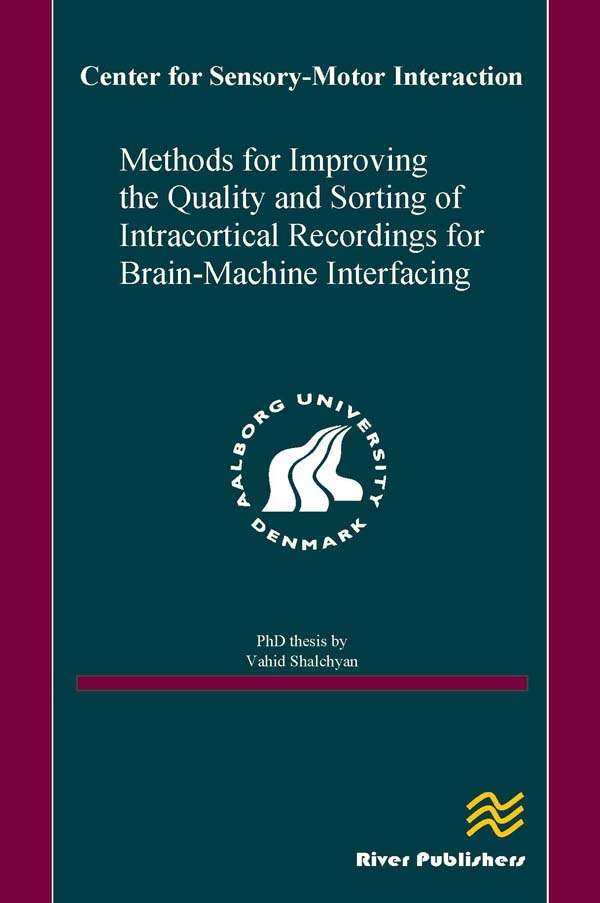
Methods for Improving the Quality and Sorting of Intracortical Recordings for Brain-Machine Interfacing
River Publishers Series in open
Methods for Improving the Quality and Sorting of Intracortical Recordings for Brain-Machine Interfacing
Author: Vahid Shalchyan, Center for Sensory-Motor Interaction, Department of Health Science and Technology, Aalborg University, Denmark
An important issue in a brain machine interface (BMI) as a system which translates neural activities into driving commands for communication and control is the performance. Despite impressive advances in the design and development of intracortical BMIs, the speed and accuracy of current systems are still far lower than that of a healthy subject’s own translation pathways. Improving BMI performance can be studied at any parts of the system (i.e., sensor, processor, or effector). In this thesis the main focus is on the signal processing part which extracts neural information (e.g., neural discharge patterns) from raw intracortical recordings. The aim of the PhD thesis is proposing signal processing methods to improve the performance of extracting neural information from intracortical signals for BMI applications.
Recent advances in the development of implantable microelectrode arrays for neural recording has provided the
possibility to directly record simultaneous activity of many neurons in the brain. Such information has been used in
brain-machine interfaces (BMIs) for helping patients with severe motor disabilities to restore some communication
or control functions by using their intent. However, signal degradation factors such as background noise that are
normally present in the intracortical recordings can reduce the accuracy of neural information extraction and
thereby reduce the efficiency of BMIs.